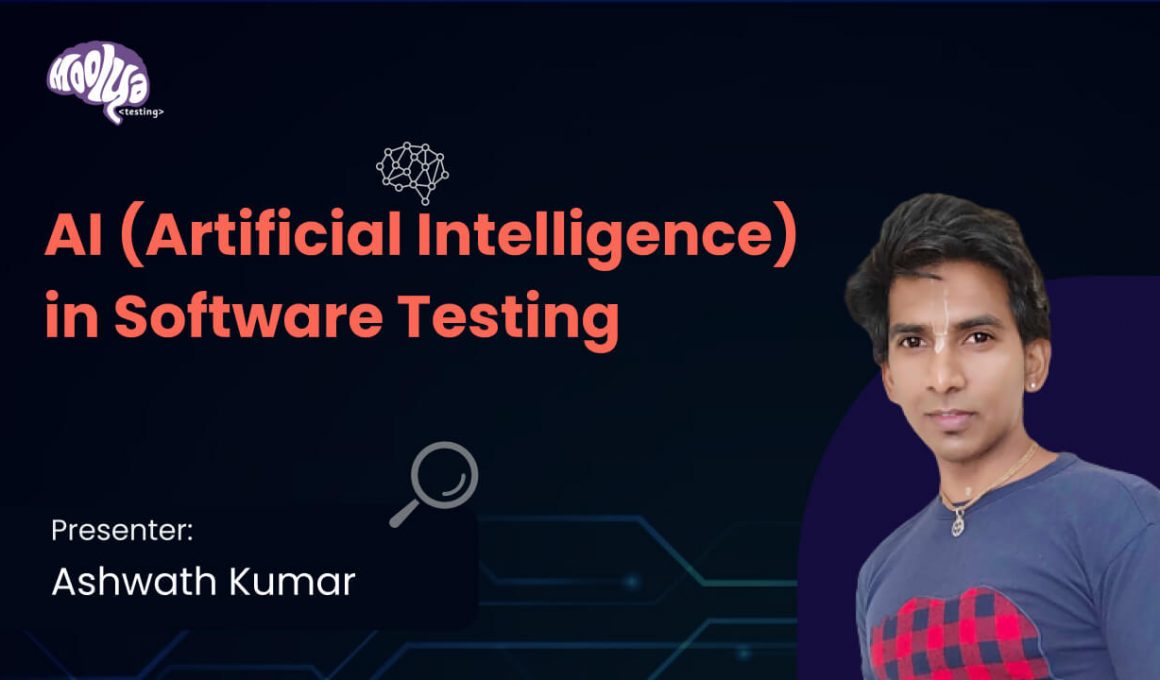AI is certainly the talk of the town. Wherever you go now it’s the buzzword that’s being heard across the industries.
Let’s dig deep as to how AI solves our problems. Because if it didn’t, then we wouldn’t have come here to discuss it in length.
But before going there I would like to talk about our own physical and metaphysical existence. Why?
Well because there’s certainly a connection between our subtle body and the AI.
While our physical existence is made up of 5 basic elements our subtle body consists of our mind, intelligence, and false ego.
Since our inception inside of our mother’s womb we have been acquiring intelligence. Some of them we’re born with while others we’ve acquired over time, with our learning.
So similarly we’ve artificial intelligence which is a process of teaching a computer and a machine and with time it’s offering certain outcomes.
From test case generations to defect detection, from test execution to test automation AI plays vital roles in software testing.
Evolution of Testing
Back in the 1980’s there was a traditional waterfall approach in place and manual testing took precedence.
As we moved on from the 1990’s to 2000 different development methodologies like Scrum, Rad started popping up. Still during that time the test automations were very bulky and expensive. This was the era when automation testing was just being introduced.
Moving on to the decade of 2000 to 2010 when open source frameworks emerged encouraging people to collaborate together. Agile methodologies also became a kind of norm in SDLC, during this era. And as a result the release cycles became faster.
Then from 2010 onwards the focus on scalability enhanced which helped the process to get streamlined. The development and deployment processes ran much faster than before.
But now the future is that of machine learning and AI.
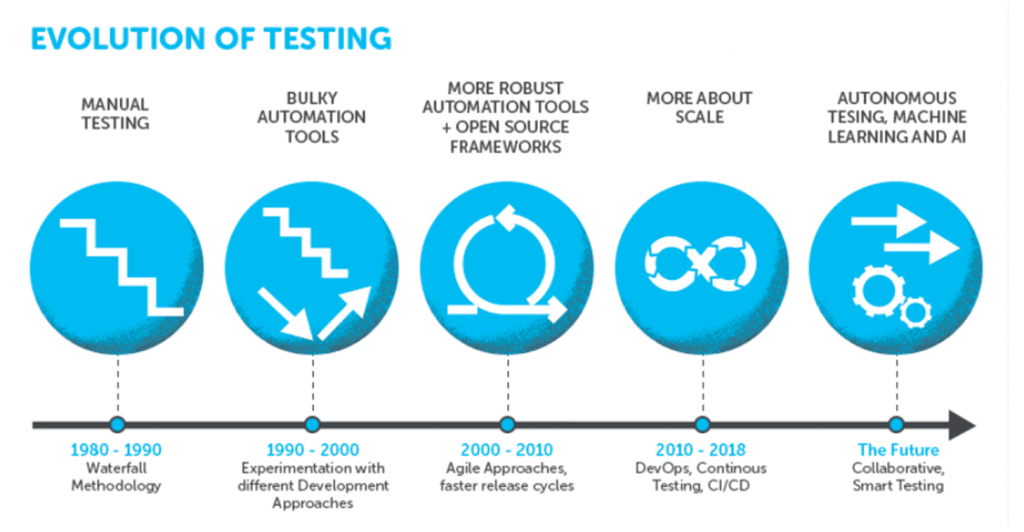
Terminologies Related to AI
When we talk about AI we compare its ability in terms of agility and stability. It’s expected to be faster. It has the knack of absorbing patterns and consequently providing solutions or suggestions.
Now these are the terminologies we need to acquaint ourselves with when we talk about AI in the field of software development and testing.
- Machine Learning :
Evolved from the study of pattern recognition and computational learning theory (studying design and analysis of ML algorithms) in AI.
- Artificial Intelligence :
Area of computer science that emphasizes the creation of intelligent machines that work and react like humans.
- Deep Learning :
This focuses on building artificial neural networks that can learn from data.
Types of Widely Used ML Algorithms
One thing is clear till now. AI works on certain patterns and these patterns are nothing but algorithms created after constant learning from the system.
These are the popular Machine Learning algorithms that can be observed in the industry.
- Supervised Learning :
We are giving the right training data (input/output combinations) for the algorithm to learn.
- Un-Supervised Learning :
We give a bunch of data and see what we can find out from that.
- Reinforced learning :
This kind Based on the concept of reward function. Rewarding Good/Bad behavior and making the algorithm learn from it.
Types of AI in Software Testing
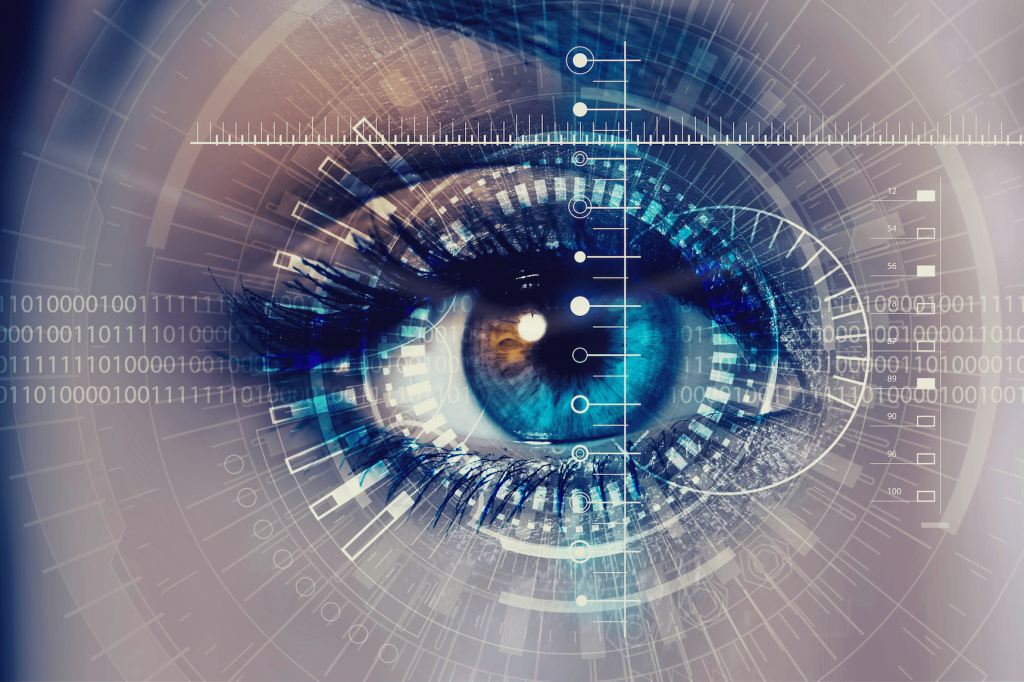
When it comes to the matter of software testing AI certainly plays a vital part. There are different types of algorithms which can equip testers to achieve faster solutions.
- Machine Learning:
Algorithms that learn from data and improve over time
-
- Can be used to identify patterns and anomalies in test data
- Natural Language Processing:
Algorithms that analyze and understand human language
-
- Can be used to analyze test results and generate reports
- Computer Vision:
Algorithms that analyze and understand visual data
-
- Can be used to detect defects in user interfaces
Test Case Generation

In the case of test case generation machine learning algorithms allows accurate predictions which in-turn help the testing and the dev team to prevent probable bugs.
- Machine Learning Algorithms:
Algorithms that learn from data and improve over time
-
- Can be used to identify potential defects and generate test cases
- Defect Prediction:
Using machine learning to predict where defects are likely to occur
-
- Can be used to prioritize testing efforts and improve test coverage
Automatic Visual Recognition
AI also comes handy in image recognition and equips the testers with the minute details which might have escaped their sight.
- Image-based testing using automated visual verification tools
Can detect minor UI incompatibilities that are likely to be missed by the human eye.
Potential visible errors can be verified even by simple ML testing without any tester intervention.
Improve Reliability
- AI testing can complete the code and make it more reliable.
Machine Learning Model Testing can read changes in the app and understand the relationship between them.
ML scripts are automatically adjusted as the app develops, reducing the versatility and fragility of the test automation.
Test Automation
- Bots:
Automated programs that simulate user behavior
-
- Can be used to execute tests and generate test data
- Intelligent Test Scripts :
Scripts that use AI to optimize test execution
-
- Can be used to identify defects and improve test coverage
Test Execution
- Intelligent Test Execution Engines:
Engines that use AI to optimize test execution
-
- Can be used to identify defects and improve test coverage
- Automated Test Suites:
Suites of automated tests that can be executed quickly and efficiently
-
- Can be used to reduce testing time and improve test coverage
Test Data Management
- Data Mining:
Extracting insights from large datasets
-
- Can be used to identify patterns and anomalies in test data
- Predictive Analytics:
Using data to predict future outcomes
-
- Can be used to optimize testing efforts and improve test coverage
Defect Detection
- Machine Learning Algorithms:
Algorithms that learn from data and improve over time
-
- Can be used to identify patterns and anomalies in test data
- Defect Prediction:
Using machine learning to predict where defects are likely to occur
-
- Can be used to prioritize testing efforts and improve test coverage
Test Environment Management
- Intelligent Provisioning:
Using AI to provision test environments
-
- Can be used to reduce testing time and improve test coverage
- Configuration Management:
Managing the configuration of test environments
-
- Can be used to ensure consistency and reliability
Test Reporting

- Data Visualization:
Using charts and graphs to visualize test results
-
- Can be used to identify trends and insights
- Dashboarding Tools:
Tools that provide a high-level view of test results
-
- Can be used to monitor testing progress and identify issues
Additional AI Benefits For Testers
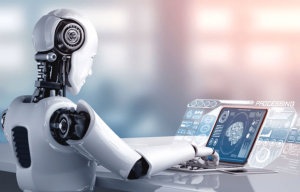
Apart from the above mentioned aspects by which AI can boost testing, there are other ways also by which it helps a tester. Mostly it enables testing by adding the necessary scalability and by reducing the time required for it.
- Reduces the test-cycle time
- Helps to find bugs faster
- Encourages Script Execution
- Improves the speed of Test Coverage
- Reduces Costs Requirements
- Improves Accuracy
AI Tools for Software Testing
And of course, there are these AI tools which enable the testers to acquire the results that they seek.
-
Virtuoso
-
EggPlant AI
-
Ask UI
-
Testim
-
Applitools
-
TestCraft
-
Functionize
-
ACCELQ
Best Practices
While AI provides some definite advantages to the testing community the need for a balance is crucial. Human intervention is imperative and AI should be used to enable testers and not remove them from the equation.
- Data Quality:
Ensuring that test data is accurate and reliable
-
- Can be used to improve test coverage and reduce false positives
- Human Oversight:
Ensuring that AI is used appropriately and ethically
-
- Can be used to ensure that AI is used to augment human capabilities, not replace them
Conclusion:
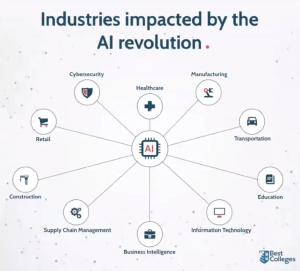
As I’ve mentioned in the introduction AI is now the buzzword that’s captivating the minds of people and impacting industries across the globe. This revolution is not just limited to information technology but from healthcare to manufacturing from transportation to retail. AI is definitely the future which is going to shape our way of lives in the coming years.
1